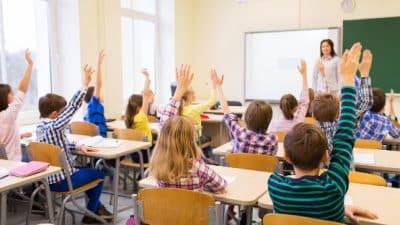
We are undergoing a wonderful, historic, frustrating and in some cases (Maui) devastating transition to renewable energy. Solar panels will be on buildings and parking lots, and in highway medians, landfills and brownfields. Utility-scale solar projects should be installed in those places before we put them on farmland. But that’s not what’s happening.
Like it or not, utility-scale solar is coming. Localities — especially those with weak ordinances for utility-scale solar, defined as projects with 50 acres or more of solar voltaic panels — need to get ready for it. I support big solar, but it must be done right.
Here are 10 things we should demand from any utility-scale solar project on rural land in the Chesapeake Bay watershed:
- Proper screening with vegetation and setbacks from property lines.
- Riparian buffers along all hydric features (like springs and streams) within the project area.
- Pollinator-friendly plants and/or marketable crops under and around the panels.
- Enough space between the rows of panels to support plant growth and allow water infiltration.
- Proper erosion, sediment and stormwater runoff controls. (Solar panels themselves, after all, are impervious surfaces.)
- Proximity to transmission lines.
- The requirement that the land be returned to its original use if solar panels are removed.
- A decommissioning plan with a bond to back it up, including a requirement to recycle and reuse whatever is possible from the decommissioned panels.
- Minimal impact on prime farmland (more on this later), forests and cultural resources.
- Stellar public participation and transparency.
Much guidance is available on the proper siting of utility-scale solar, including model ordinances. In Virginia, I have found the most complete guidance from the Alliance for the Shenandoah Valley. There’s also good information at the American Planning Association and the Chesapeake Bay Foundation.
Farmland protection purists may disagree with me, but please hear me out. In this country, we lose one acre of farmland every minute to residential and commercial development. Leasing farmland for solar (and eventually putting it back as it was) is a way to protect farmland.
U.S. farmers, conservatively estimated, currently devote about 30 million acres to growing corn to produce ethanol for our gas tanks, and some studies show this produces more greenhouse gases than it prevents. A little more than a third of that land in solar panels could generate 100% of U.S. electricity demand.
The U.S. Department of Agriculture’s Conservation Reserve Program has retired 23 million acres of farmland from annual crop production because they are highly erodible. Solar panels on half of that acreage could generate 100% of U.S. electricity demand.
We also need to recognize the difference between prime farmland and marginally productive farmland. Prime land — mostly level with deep, well-drained soil capable of producing food without irrigation — should be avoided for utility-scale solar.
Soil quality is another important factor. Utility-scale solar should avoid the best soil for crops, defined as class I and class II in the USDA’s Land Capability Classification System. No more than 30% of land turned over to solar projects should have class I or II soils.
Farmland with soil that is class III or higher is considered marginal, with “severe limitations” for growing food. These types of soil are better suited for solar arrays and may support pollinator plants or forage for sheep to graze.
Solar panels may ruin your view, but that’s a non-issue. If you don’t like the “unnatural” look of solar panels, get over it. It’s not your land. I wish there were a cost-share program to pay me for the view our farm provides the neighbors, but there isn’t.
Putting solar panels on my land is a right granted because I bought and own the land. A changing view is not a legitimate reason to object to utility-scale solar.
Consider the alternative view if the farmer sells out to development. Would you rather look at a sea of McMansions, which come with a host of far worse downsides, like suburban traffic, higher taxes and demands for more services?
Finally, it’s time to move on from our fossil fuel binge. In a time when we have atmospheric rivers, bomb cyclones, heat domes, and record durations of extremely high temperatures, and in a time when we have smoke from wildfires thousands of miles away clouding the Statue of Liberty and the mountains in the Shenandoah Valley, and in a time when drought conditions bring death and devastation like that visited on Maui in August, we need to reduce carbon emissions, now — and in a big way. Utility-scale solar will help us get there.
Robert “Bobby” Whitescarver is a farmer in the Shenandoah Valley, author and watershed restoration consultant. He teaches natural resources management at James Madison University. His website is gettingmoreontheground.com. This commentary was first published in the Virginia Mercury, a nonprofit news organization covering state government and policy. The author’s views do not necessarily reflect those of the Bay Journal.










